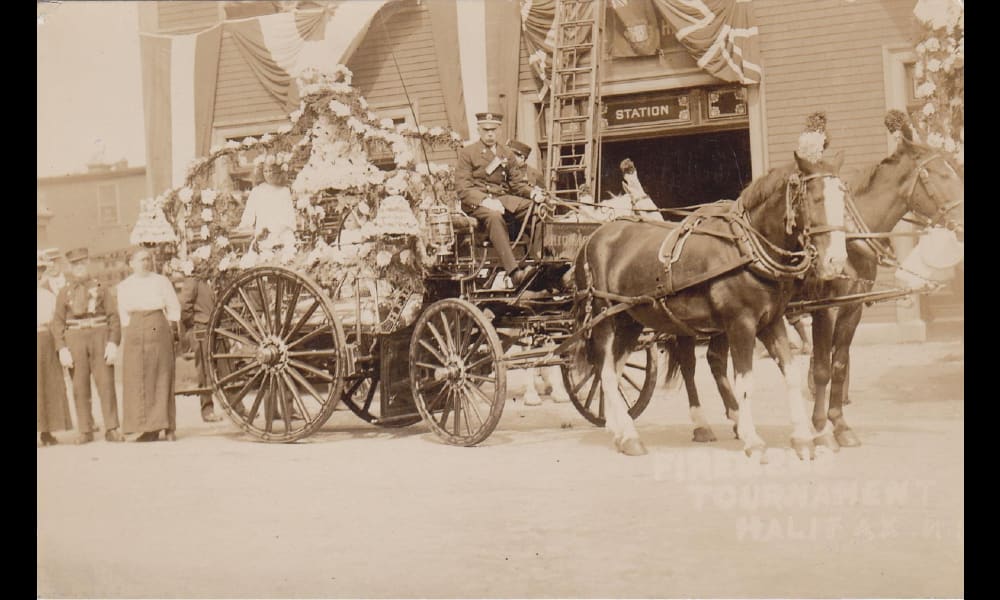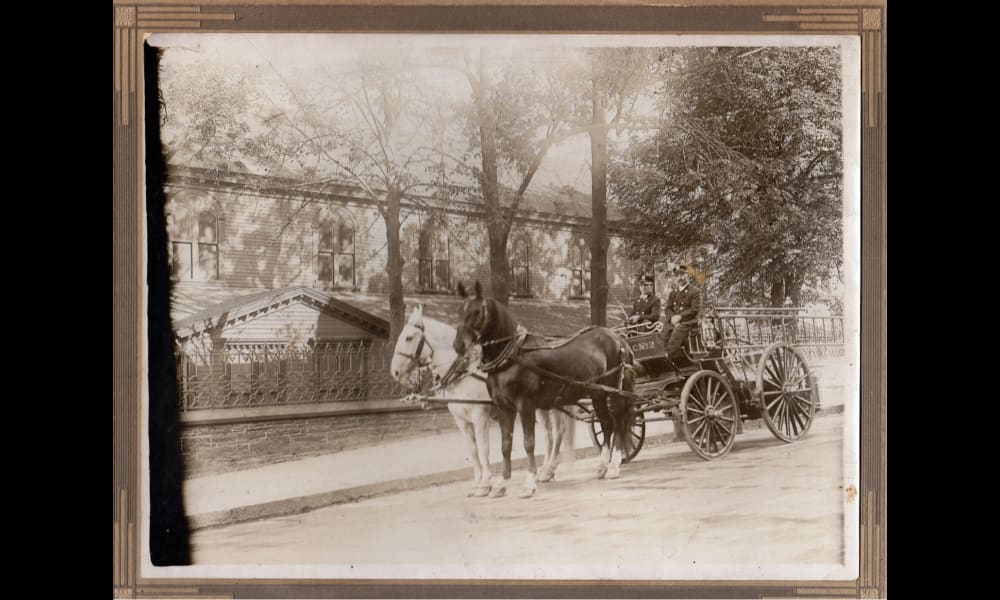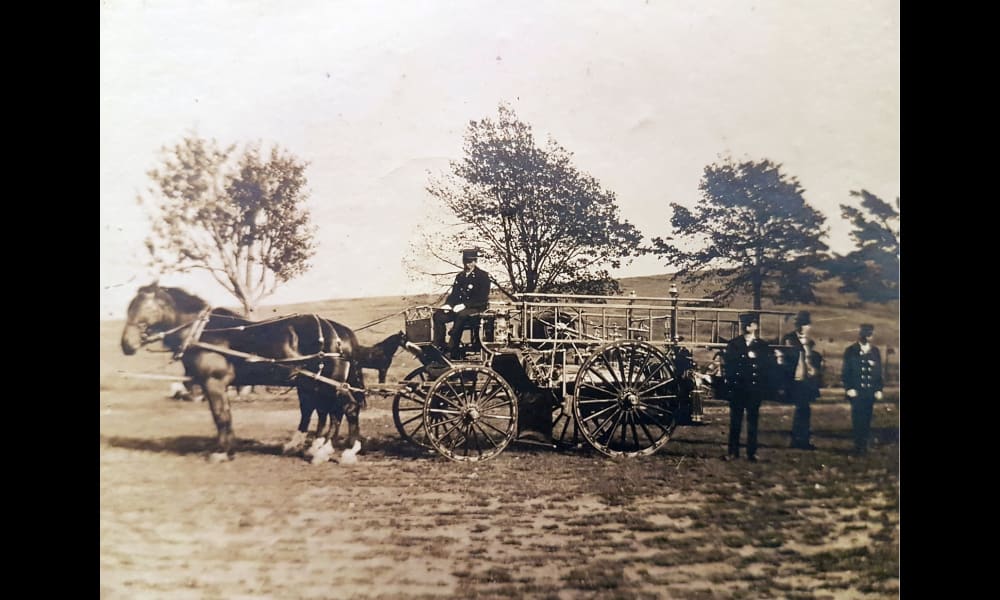1894 Chemical and Ladder Combination
The Babcock chemical engine of 1895 was Halifax’s second chemical fire engine, following the 1892 Holloway model. It was acquired as part of the city's move toward modern, more efficient fire suppression technologies in the pre-hydraulic era.
Procurement and Specifications
-
Ordered From: H. H. Fuller & Co. (of Boston)
-
Tender Accepted: September 24, 1895
-
Engine Type: Babcock pattern, two-wheeled chemical engine
-
Delivery: Fall of 1895
-
Approval: The Board of Firewards confirmed it met all technical and operational specifications required by the city.
How It Worked
-
Chemical Reaction System:
-
Contained a large horizontal tank pre-filled with sodium bicarbonate solution.
-
A glass bottle of sulphuric acid was suspended inside the tank.
-
At the scene, the acid bottle was ruptured manually, initiating a reaction that produced carbon dioxide gas, which pressurized the tank.
-
The pressure forced the chemical solution out through a hose and nozzle.
-
-
Capacity: Typically around 35–60 gallons
-
Stream Range: Roughly 40–60 feet, depending on nozzle and hose configuration
First Use in Halifax
-
Date: December 23, 1895
-
Incident: A fire on Gottingen Street
-
Result: Successfully used in a live fire situation, confirming its effectiveness in rapid, low-water suppression operations.
Operational Role
-
Used primarily in:
-
Commercial districts where minimizing water damage was critical
-
Small structure or early-stage fires
-
Night fires, when water pressure could be unreliable
-
Winter months, as chemical engines didn’t require hydrants, which could freeze
-
-
Typically operated by 2–4 firefighters
-
Stored fully charged and ready to deploy immediately upon arrival
Legacy
The Babcock engine marked the last major chemical apparatus procurement before the professionalization of Halifax's fire service in 1896. It played a transitional role between hand engines and the full motorization era, helping to bridge manual and mechanized suppression methods.
How Chemical Engines Were Deployed in Halifax:
1. Purpose and Role
-
First-in Response: Chemical engines were often the first apparatus deployed to small fires—especially in shops, warehouses, or dwellings—because they could begin suppression immediately without needing to connect to hydrants.
-
Minimize Water Damage: Unlike steam engines, which could dump hundreds of gallons of water, chemical engines used a controlled stream of pressurized chemical solution, ideal for preserving merchandise.
2. Chemical Reaction Mechanics
-
Operation Principle: Each engine carried tanks containing a solution of sodium bicarbonate (baking soda) mixed with water.
-
A separate bottle or canister held concentrated sulphuric acid, which, when released into the main tank, caused a vigorous reaction:
H2SO4+NaHCO3→CO2(gas)+H2O+NaHSO4 -
CO₂ Pressure: The carbon dioxide gas pressurized the tank and forced the liquid out through a hose and nozzle.
3. Crew Deployment
-
Typically operated by 2–4 firefighters, depending on the size.
-
Upon arrival:
-
The tank was tilted or inverted to release the acid into the solution.
-
Hoses were unreeled quickly.
-
One firefighter managed the nozzle, while others maneuvered the engine and monitored pressure.
-
4. Limitations and Use Cases
-
Tank Size: Could carry only 30 to 60 gallons of solution—ideal for small fires or to control spread before the steam engine arrived.
-
One-shot Activation: Once mixed, the reaction couldn’t be paused; the tank had to be recharged offsite, making coordination crucial.
-
Winter Conditions: The engines were popular in winter, since they didn’t rely on hydrants which could freeze.
5. Strategic Deployment in Halifax
-
Based on records, the Babcock chemical engine was housed centrally, likely at the Market Building or another key station, ready for downtown commercial fires.
-
Used in tandem with hose reels or steamers when fires escalated, often helping to protect exposures or prevent rekindling.




